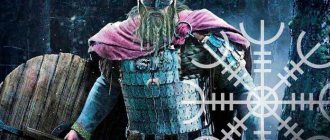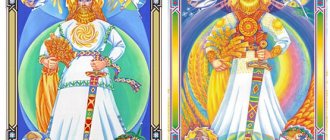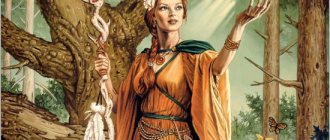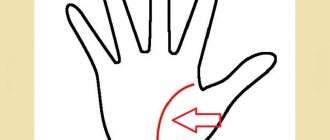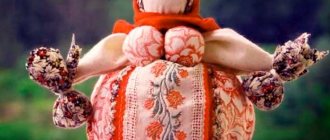From time immemorial, people believed that the struggle between good and evil was raging inside them. The evil spirit, like a snake, tried to denigrate a person’s soul with all sorts of temptations in order to lead him astray from the true path. And only the sun could withstand this darkness. People deified the sun and asked to save them from tempting snakes. According to the myths of different peoples, the most terrible enemy of snakes was the sacred bird Garuda, which exterminated them with its divine light.
Garuda is a bird or symbol
In Hinduism, Garuda is depicted as a half-man, half-bird, whose entire body, head, arms and legs, up to the knees are human, and the beak on the face, legs below the knees, back with wings and tail are birdlike. It is also believed in Hinduism that this creature feeds on snakes (nagas).
Some researchers of ancient Indian mythology argued that Garuda exists, and it is not just a symbol or designation of something, but a real object that gives the power of the stars and the universe. Some historians have studied ancient Indian texts, believing that they may find this item. Someone claimed that Garuda was found by Hitler. It was this item that gave him the opportunity to build the famous “flip” aircraft, and discovered the secret of a new energy source, which he used not only in military technology.
We will not delve into the complex narratives of ancient Indian legends, since the origins of the mention of this word were completely different people and other things.
In finishing
- Garuda is a complex symbol of the Slavs, which came to us from Hinduism. Although there are other versions of its origin. It symbolizes either the divine bird, or the chariot of Vaitmara, on which the Heavenly Father on High moved through the spaces of the Universe.
- The Garuda amulet brings a person closer to God, promotes purification and expansion of consciousness, reveals the real dignity of things in the world, develops intuition and the gift of foreseeing the future.
- The symbol can be used by women, men and even children. The main thing is that the mortal wearing it develops spiritually.
The history of the appearance of garuda
So, in order to figure out where the term Garuda came from, we will have to turn to the Slavic-Aryan Vedas.
Around 2692 BC. to ancient India, which at that time was called Dravidia, which was inhabited by the Negroid tribes of Dravida and Naga. A campaign was carried out by the Aryan tribes with the aim of expelling from Dravidia the black magicians who created the cult of the Goddess Kali - the Black Mother, to whom they made human sacrifices. Since most of the black magicians were from the Naga tribe, the extermination mainly concerned representatives of this particular tribe, which is reflected in the legends of ancient India, where representatives of this tribe subsequently acquired the image of snakes.
In terms of technological and scientific development, Dravidia at that time was at the stage of formation, in other words, there was no talk of any technologies in the Naga and Dravidian tribes at that time. As for the Aryans, their level of development was hundreds of times higher, and they fought using technological means. Subsequently, in the lands liberated from the black magicians (in the interfluve, in the region of Mesopotamia, modern Egypt), the civilization of the Sumerians settled, in which fragments of the story of the great Aryan campaign remained.
The term Garuda actually originated in ancient India and it meant nothing more than “Vightman” aircraft. It is for this reason that Garuda is depicted as a bird in human form. The Whitemans were flying ships with large sparkling wings, with people on board. Poorly educated representatives of the tribes could not correctly interpret what they saw, so the half-bird, half-man Garuda began to appear in myths.
However, that's not all. The word Garuda itself does not mean an aircraft, and is not the name of a mythical creature; it is an insignia that was depicted in the bow of the ships belonging to the Aryans. Literally, Gar+Uda stands for Remote City of the Aryans. The applied symbol contained not only a unique address of the destination, but also a pass to this place.
Garuda looked like the spiral movement of a swastika and was applied to the Vaitmans and Vaitmars, it was not only a distinctive symbol, but also a kind of connecting element for the ship and the destination.
The magical world of magic and esotericism or the MAIN LAWS OF THE UNIVERSE
Every person wants to touch something special and previously unknown, to dissolve new boundaries of understanding for himself, to come into contact with something supernatural and unfamiliar. In view of this, everyone who is in search of high spiritual practices, who wants to read “behind the curtain”, eventually receives answers. Turning to the depths of the universe, it is appropriate to say that at all times there has been talk about wizards, sorcerers and healers, mystical phenomena, inexplicable events and much more, but is beyond understanding. Over time, people managed to merge all their practices and interests in the mysteries of the Universe through the path of self-knowledge. And today it is called in one word - esotericism. However, it is worth immediately focusing on the fact that magic and esotericism are two cardinal opposites. Despite the fact that they directly work with supernatural things, esotericism professes pure practices that have no negative consequences. Magic, in turn, involves working with spells, using props and appealing to the Forces of Light or the Forces of Darkness. Esotericism prefers not to touch on this; it preaches concentration on energy flows that can transform the life of everyone who learns to “connect with them.” So, in order to understand the vital necessity of esotericism, become familiar with its laws and learn to master it perfectly, you should become more familiar with it in all its details and understand how it works.
In the first shot, it is worth saying that with the help of esotericism you can seduce luck. To do this, it is enough to direct your thoughts in this direction and predetermine yourself that phenomenal luck will definitely happen in the next sitting. Due to the fact that thoughts are material, you can not doubt for one second that everything planned will come true in the near future. As a result, we can say with confidence that the main rule of esotericism is faith in yourself, in your strengths and in the fact that with the help of positive thinking and an internal attitude from above, receiving light waves, you can achieve phenomenal success.
Money luck will also not be long in coming if you regularly feed your mind to the breast (child) with the right thoughts. So, you should take one of the bills in your wallet, place it in front of you, put your palm on it, close your eyes and imagine how this exception attracts other means, how it, like a magnet, attracts money to itself, how the wallet becomes everything thicker and thicker, as interest comes from different sides... Thus, by visualizing the picture of your successful financial future, you can be 100% sure that it will definitely come, and completeness exactly as it was born in the imagination.
Due to the fact that esotericism teaches us to know the world through self-knowledge and self-improvement, it will be much easier to understand certain representatives of modern society in a certain situation. Being in an absolutely harmonious state, essentially filled with inner strength, there is no doubt that a happy ending in business will come suddenly and unexpectedly, or a problematic situation will be resolved by itself, as if by magic. Esotericism teaches you to look at the world with bright and pure eyes, to grow spiritually, cultivating love and harmony in your chest, and you don’t have to think about the coming of success, because someone will be nearby all the time, accompanying the spiritualized person every step of the way, increasing his income, filling him with immense strength, joy and boundless peace.
Garuda Slavic talisman-amulet
Centuries later, the ancient Slavs began to use Garuda not only as a symbol that came from their ancestors from the distant past, but also began to believe that amulets made in the form of Garuda were capable of protecting and bringing good luck.
Even today, Garuda is sold as a talisman-amulet, protecting the symbol inherited by the Slavs from the former power of their ancestors.
Based on all of the above, the history of the appearance of the term Garuda and what this term means becomes clear.
The picture was stolen here: Who is the year of the Red Rooster, and who is the year of the Red Garuda!)) . And attached to it is a text with “incomprehensible” words and rituals. “Garuda symbolizes the element Fire,” and what does the word itself mean? For what qualities was the bird called Breast Garuda?
Garuda
(Sanskrit garuḍa, “all-consuming (Sun)”) - in Hinduism, a flying bird mount (vahana) of the god Vishnu, a fighter with snakes - naga.
Vahana (Sanskrit vahana - vájana “to sit on, ride on something”). Vah
translated from Sanskrit means “carrier-
carrier
”.
Lives on the divine World Tree, which gives birth to the seeds of all known (and unknown) plants. Garuda feeds on giant snakes. In “order of revenge,” snakes constantly creep up to the Tree to steal chicks from Garuda. In Tibetan medicine, “Garuda-5” refers to complex recipes whose components are associated with the heart, blood, bones, meat and sinews of the sacred bird.
I won’t analyze
Cherry Vish Visceral
(
the Supreme
flesh - the inside)
Viscera
plural k to viscus viscus vīscus, eris n. (prim. pl.) meat of the entrails (mother's) womb, womb, womb, fruit of the womb, native offspring, (closest) creature pl. the very middle, inside, depth, depth pl. wealth, condition, property, means = testiculi
viscereus, a, um - consisting of flesh, carnal
Garuda view from front and profile:
A ferocious man-bird in feathers, with an eagle-chicken beak from which fangs protrude. There is a stupa-helmet on her head and she tramples and deals with snakes, what is there in her genitals that she can’t make out (a duck or a swan’s head?).
Garuda is a very smart and friendly bird, often offering its back not only to Vishnu, but also to heroes - people who want to move from place to place and even from one end of the world to another. Moreover, Garuda stole the magic herb called “soma” from the gods and, like Prometheus, gave it to the human race; from then on it became the sacred herb of Vedic rites.
An analogue (almost an exact copy) of Garuda in Zoroastrianism is Simurgh, the King of Birds.
The Georgian equivalent of Garuda is Pashkunji, a giant bird of the Caucasus. Pashkunji also favors people; in Georgian fairy tales, he even serves as a means of transport for the heroes. During the flight, Lashkunji needs to be constantly fed, so it is necessary to take on board a substantial supply of meat. If the meat runs out before the flight ends, the horseman is obliged to take up the dagger and satisfy Pashkunji’s hunger with pieces of his own body. This part of the myth seems to hint that Garuda/Pashkunji and the “dzhigit” feed into one whole and depend on each other.
Garuda
or in modern Indo-Aryan languages.
The etymology of the word Garuda may be derived from the root grī and means "devourer"
, this root was previously identified with destructive solar fire-heat. The word GR (): in Sansit "to devour", appears already in the Rig Veda
Root Grri (its origin is unknown) Examples in other European languages: grrlo girlo - vent (“to eat”) in Slavic languages gerru gėrimas (“drink”) in Lithuanian žora — zhor-heat in Russian glutio (“swallow”) and gula (throat) in Latin
Perhaps Garuda was called "devourer" because it was originally identified with devouring fire - the heat of the sun's rays.
According to the Sanskrit-English Dictionary of Monier Monier-Williams, Garuda was the son of the sage Kashiapa Kishiara and his wife Vinata Vinata. After birth, her sparkling brilliance frightened the gods and they assumed that it was the god Agni himself and asked for his protection. When the gods discovered that this brilliance came from Garuda, they recognized her as a supreme being and called her “Fire and Sun.” Aruna (Sanskrit aruṇa, "reddish"), the charioteer of the Sun or personified dawn, is the elder or younger brother of Garuda. Goddess Matchmaker Suajá, wife of the god Agni, takes the form of a female bird Garudi or Suparni to unite/marry Garuda (information from Wiki in Spanish against them for confusion in family relationships)
Let's look for words with the same root and similar meaning to Garuda in Russian.
Let's start with the chest
. Do not confuse the word mammary glands (heavy hailstones) with the entire breast. Both men and pigs have breasts (ridge)
What is the functionality/purpose of breasts?
Etymology: Derived from Proto-Slavs. *grǫdь, from cat. among other things happened: Russian, Ukrainian. chest, bulg. grādi pl., Serbohorv. breasts pl., Slovenian grȏd, Czech hruď zh., Slovak. hruď, Polish old grędzi. Related to Lat. grandis "great, majestic", Greek. βρένθος “pride”, βρενθύ̄ομαι “I hold myself proudly”. The connection with the Greek is doubtful. γρόνθος “fist”, lit. grandìs “link” and pile. Compare with lit. gį̃sti “to lay the floor”, Slav. gręda “beam”, also from Armenian. argand "abyss"
Chest - the upper front part of the body of a person or other vertebrate animal between the neck and lower back, the seat of the heart and lungs; poet., book. a symbol of the focus of a person’s feelings, experiences, and emotions.
According to the meaning of the root of the word, the Breast serves as a sequence/obstacle and a fence to the internal organs (core - core/cor); size (heaviness) is associated with majesty, which some people dream about; can carry the “function” of a hailstone fist. The chest of the ship-stern (GR => CR) behind this edge/fence is food and bins.
The heat of Garuda and breasts is not only in a figurative and poetic sense, but also in the symptoms of “milk let-in, lactostasis and mastitis.”
Ridge ridge “beam”, Ukrainian. ridge “bed”, Bulgarian Greda - the same, Serbohorv. greda (vin. gredu) “beam, shallow”, Slovenian. gréda “beam; garden bed", Czech. hřada “beam, pole; bed", Polabsk. gŕǫda - the same. Related Lit. grindìs w. "floorboard, floor", plural griñdys (n. grindũ), Eastern Lit., Western Lit. grñdos f. pl. ridges, lit. griñdas m. “ceiling made of poles in a barn”, grandai “slats, rods on the ceiling beams”, granda f. "tier", Latvian grìda "floor", lit. grindžiù, grį̃sti “to lay the floor”, Old Prussian. grandico “beam”, Old Norse grind “stern, frame, frame, lattice, fence”, ancient German. grintil “bolt, beam, pole”, lat. grunda "στέγη", suggrunda "rafter stand". The localization of the ridge, according to the meaning of the root, is not specific; it can be located in any plane (the main thing is the presence of a certain ridge - a row, orderliness in the form of an obstacle).
Chest Is the chest the “guard” of the core? The word Guard is a selected, privileged part of the army - the best representatives of any field of activity From Italian. guardia “security, guard, guard”, further from Gothic. vardia, further from Pragerm. forms *wardo- “to protect, guard”, from which, among other things, came: Old English. Weard and English ward, Old-Sax. ward, other Scand. vörðr, ancient German wart, etc.; goes back to the Proto-Indo-European. *wrū- u̯er-8 -wer 4 - “gewahren, observe, defend” (depending on the version of the author-classifier). I think the toponyms Vartan-Vardan are also associated with this root, but probably the guards root was derived from Garuda. Garuda and the claws of the vulture-eagle, as a derivative, are also associated with “county” root words: agarrar - to grab, agarradera - grip, garra - claw and tiger.
Garuda in Hindi is the constellation Aquila (Vulture).
Αετός Δίας (Aetos Dios) Vultur Volans - Flying Kite, Aquila In the constellation itself there is a star Altair (α Aql / Alpha Aquila) from the Arabic al-nasr al-tair, “flying eagle” (Eagle in Eagle?). Altair is one of the peaks of the so-called. “Summer Triangle” (Vega (α Lyrae), + Deneb (α Cygnus) + Altair (α Eagle)) Constellations of the summer sky. Summer Triangle in the sky; and the constellations of the zodiac are winter-autumn.
At low latitudes of the southern hemisphere, asterism is observed in winter and spring
in the northern part of the sky low above the horizon. At latitudes higher than 50°S, only Altair is visible. The Greeks in this constellation saw an eagle sent by Zeus to kidnap the king of Troy - Ganymede (Constellation Aquarius).
In ancient Egypt, the constellation Aquila corresponded to the falcon Horus-Horus.
Horus, Horus (
ḥr - “height”, “sky”
) He is apparently symbolized by Alshain (β Aql / Beta Aquila) - a triple star in the constellation Aquila. The traditional name goes back to the Perso-Arabic term الشاهين aš-šāhīn (shah?), meaning “peregrine falcon” or “hunting falcon” (Falcon in Orel?).
The Egyptian god Horus and the Vedic god Garuda were the prototypes of St. George the Victorious. The Vedic God Maha Vishnu is identical to the Egyptian god Nunu. The “ancestor” of the terrible universal “dragon-snake”, which George the Victorious defeats, in the sacred sense was the Egyptian “Serpent - Apep - Apep”
Apep, Apophis, Greek. Ἄπωφις in Egyptian mythology is a huge serpent personifying darkness and evil, the primordial force personifying Chaos, the eternal enemy of the sun god Ra. Apep's mission was to consume the sun and plunge the Earth into eternal darkness. Often acts as a collective image of all the enemies of the sun. Apep lives in the depths of the earth, where his fight with Ra takes place. When Ra begins to swim along the underground Nile at night, Apep, wanting to destroy him, drinks all the water from the river. In the battle with Apep (repeated every night), Ra emerges victorious and forces him to spew out water back.
The picture in the center shows the Coat of Arms of Moscow. On the left is the image of the Egyptian god Horus-Set. On the right is a temple image of the Vedic god Garuda. Below is an Egyptian papyrus painting of the serpent "Apop" being slain by a spear. “The prototype of St. George the Victorious” is the Egyptian god “Horus-Set”, as a symbol of “unity and struggle of opposites,” or the Vedic god Garuda. Source and full version of the article
Nowadays, there are many legends that tell about majestic deities and various mythical creatures. One of them is Garuda. He appears before us in the guise of a bird with a human body. This creature has become widespread in various cultures, including Slavic.
What is the meaning of the symbol?
The talisman is of particular importance for the female half of the population. Some sources contain information that witches used the amulet in their activities, but this is not true. He was approached for help by healers and witches who believed in the forces of light.
For women, the talisman provides an opportunity to receive protection for their loved ones, wisdom and true happiness.
Garuda has a deep meaning. It involves resistance to inner demons and the desire to overcome one's own vices. As a result, this makes it possible to feel like a part of the Universe and feel involved in the Supreme God of the Family.

